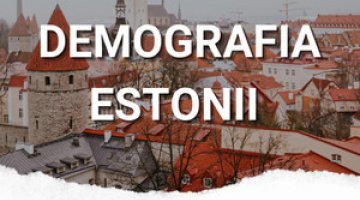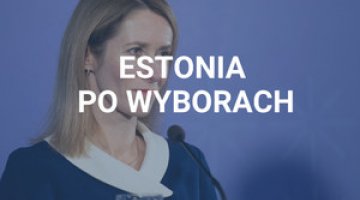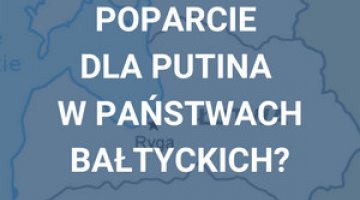The parliamentary elections in Estonia
The ruling Estonian Reform Party led by Taavi Roivas won the parliamentary elections held in Estonia on 1 March. This liberal party which opts for co-operation with the EU and NATO has secured 30 of the 101 seats in parliament. The pro-Russian Estonian Centre Party led by the mayor of Tallinn Edgar Savisaar (the party co-operates with the pro-Kremlin party, a United Russia and has not condemned the annexation of Crimea) came in second with 27 seats. The Social Democratic party which co-rules with the reformists came in third with 15 seats. The right-wing Union of Pro Patria and Res Publica will also have seats (14) in parliament for another term as well as two populist parties which are making their debut in parliament: the Estonian Freedom Party (8 seats) and the Conservative People’s Party of Estonia (7 seats).
Commentary
- The victory of the ruling Estonian Reform Party proves that the situation in Ukraine has turned this pro-Western party which focuses on security policy (2% of GDP on military spending, training with the participation of allied armies, adapting legislation to current threats), into Estonians’ guarantor of state stability. The fact that the reformists have remained in power is a signal for Estonia’s Western allies that Estonia’s pro-Western political course will be maintained, despite the popularity of the pro-Russia opposition Estonian Centre Party, whose leader as the only politician in Estonia’s mainstream politics who does not support Ukraine and accepts the Kremlin’s policy, including the annexation of Crimea.
- Security and Eastern policy provided the background for the major debate over economic and social issues (boosting the economy, taxes, increased state support for citizens, facilitating solutions in naturalisation policy). The fact that two new parties have entered parliament and have a total of 15 seats as well as an increase in the electorate of the centrists indicates that Estonians expect change after an austerity period linked with efforts to join the eurozone and the economic crisis. The Estonian Centre Party put the most emphasis on the need to redress economic and social policies. Its agenda is focused not only on supporting the Russian-speaking minority—for years it has been filled with social populism – introducing progressive taxation, preventing unemployment, increasing the minimum wage to 1000 euros. The centrist leader, Edgar Savisaar, who has introduced free public transport in Tallinn, rallied the largest support among politicians, eclipsing Prime Minister Roivas. A similar political manifesto, populist in social issues, was presented by two parties that are new to parliament – the Estonian Freedom Party and the nationalist Conservative People’s Party of Estonia.
- Prime Minister Roivas has been entrusted with the mission of forming the government. Having lost as many as seven seats in parliament, the reformists and Social Democrats that used to form the coalition will not be able to rule alone. The presence of two new parties in parliament provides the opportunity to establish a coalition in different configurations; all of which would, though, have three or four parties. The Social Democrats, the Union of Pro Patria and Res Public, and the Estonian Freedom Party are said to be potential partners for the reformists in the government, even though differences between their political programmes are quite large. Due to the scandal following the elections over the statement made by one of the members of the Conservative People’s Party of Estonia which justified fascism, the prime minister is not holding coalition talks with them. He has also ruled out talks with the centrists, thus ruling out the only possible scenario for a two-party coalition.
Appendix
The results of the elections (turnout: 63.7%)
|
Party and its leader |
Number of seats in parliament (101 total, compared to 2011) |
Percentage of support (compared to 2011)
|
Party’s profile and position on the political scene |
|
Estonian Reform Party / Taavi Roivas |
30 (-3)
|
27.7 (28.6) |
Liberal, market-oriented and pro-Western. Present in several ruling coalitions since 1995, also together with the Estonian Centre Party. Since 2007 it has succeeded in maintaining support at a stable level of 27-28%. The reformist leader has been at the helm of four consecutive coalitions that ruled in Estonia for almost ten years – until March 2014 the reformist Andrus Ansip was Estonia’s prime minister, currently he is the European Commission Vice President. Taavi Roivas (aged 35) has been Estonia’s prime minister for almost a year; he has not been involved in several scandals that eroded voters’ sympathy for the reformists towards the end of the Ansip government’s term.
|
|
Estonian Centre Party
Edgar Savisaar |
27 (+1) |
24.8(23.3) |
Centre-left, populist party with its origins in the People’s Front that championed independentism. The party’s position is identical to its leader’s views on particular issues. The party opts for co-operation with Russia in alliance with the pro-Kremlin party, a United Russia (Savisaar is alleged to have sought financial backing from Russia).The party represents the interests of the Russian-speaking inhabitants of Estonia (approximately 28% of the country’s population –25.5% are ethnic Russians). Approximately 70% of Russian-speaking inhabitants vote for it. The party enjoys the largest support in and around Tallinn. It is also popular in the north-eastern region Ida Virumaa near the Russian border, where there is a large Russian-speaking population (mainly in Narva).
|
|
Social Democratic Party
Sven Mikser |
15 (-4) |
15.2 (17.1) |
Pro-Western left without post-communist origins, it has good relations with the reformists, particularly in the area of foreign policy – the Euro-Atlantic course, co-operation with the Nordic region. The party seeks dialogue with Russia but as partners. Since 2011 it has been trying to win over Russian-speaking voters (for the last year ethnic Russian Jevgeni Ossinovski has represented the party in the government as the education minister), taking part of the minority votes from the centrists. The current president of Estonia Toomas Hendrik Ilves comes from this party.
|
|
Union of Pro Patria and Res Publica
Urmas Reinsalu |
14 (-9) |
13.7 (20.5) |
Conservative party, with a Christian-Democratic profile. It is liberal and pro-business in the area of economic policy. Its honorary president is Mart Laar, the reformer of the Estonian economy at the beginning of the 1990s (privatisation, flat-rate taxation).
|
|
Estonian Freedom Party
Andres Herkel |
8 |
8.7 |
Liberal, populist, established in 2014 (its leader left the Union of Pro Patria and Res Publica). The party opts for a depoliticisation of public life in Estonia, lower funding of political parties from the state budget, more funding for local governments and more participation of citizens in governance (e.g. through non-governmental organisations). It has populist social postulates – lower taxes, a higher tax-free threshold.
|
|
Conservative People’s Party of Estonia
Mart Helme |
7 |
8.1 |
Nationalist, defends traditions and national values, anti-immigration, Eurosceptic (it opts for federalisation within the EU). The party challenges the Border agreement, signed in 2012 (still not ratified), by virtue of which Estonia formally recognised the loss of approximately 5% of the territory it had before World War II. The party co-operates with nationalist parties in Latvia and Lithuania.
|




